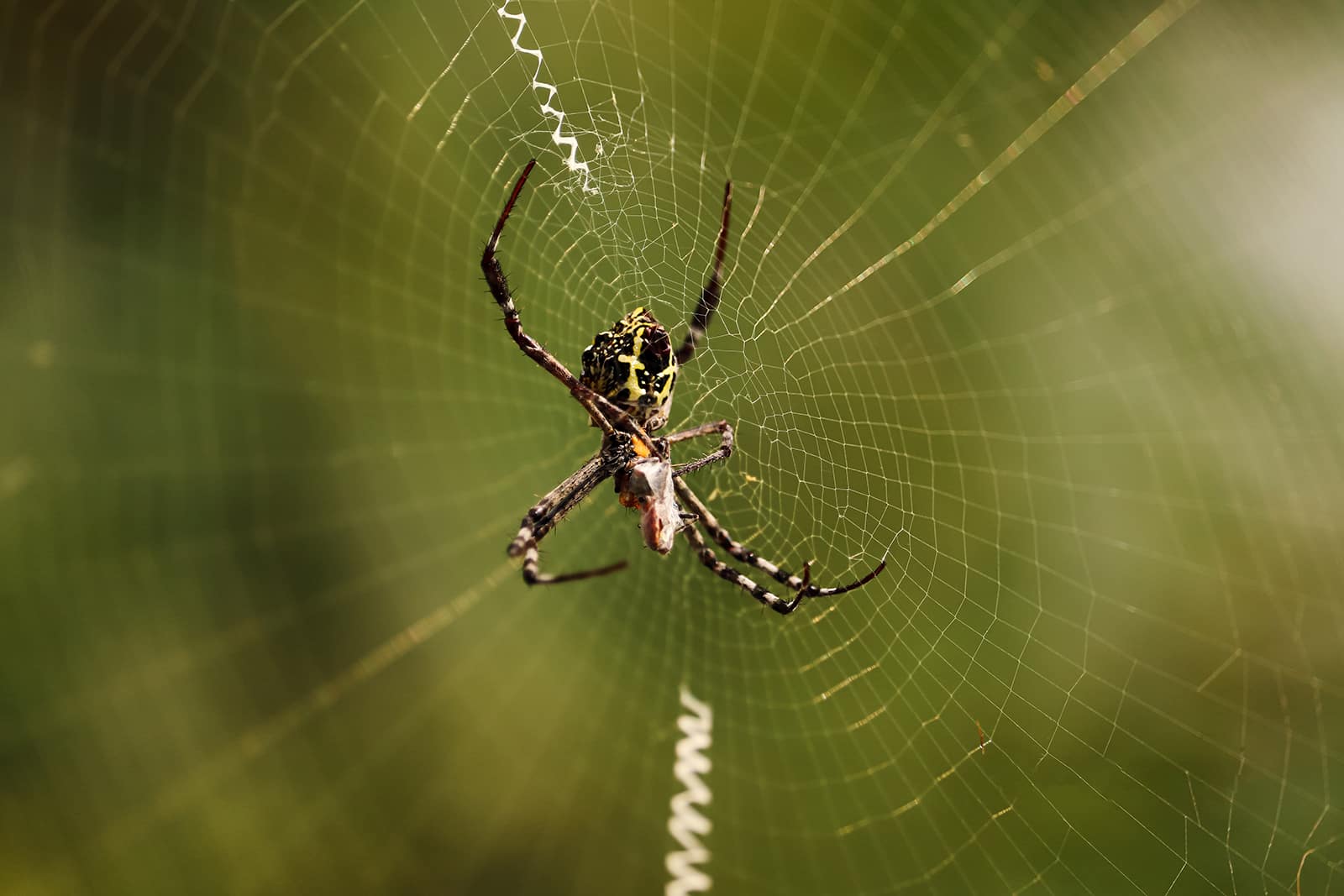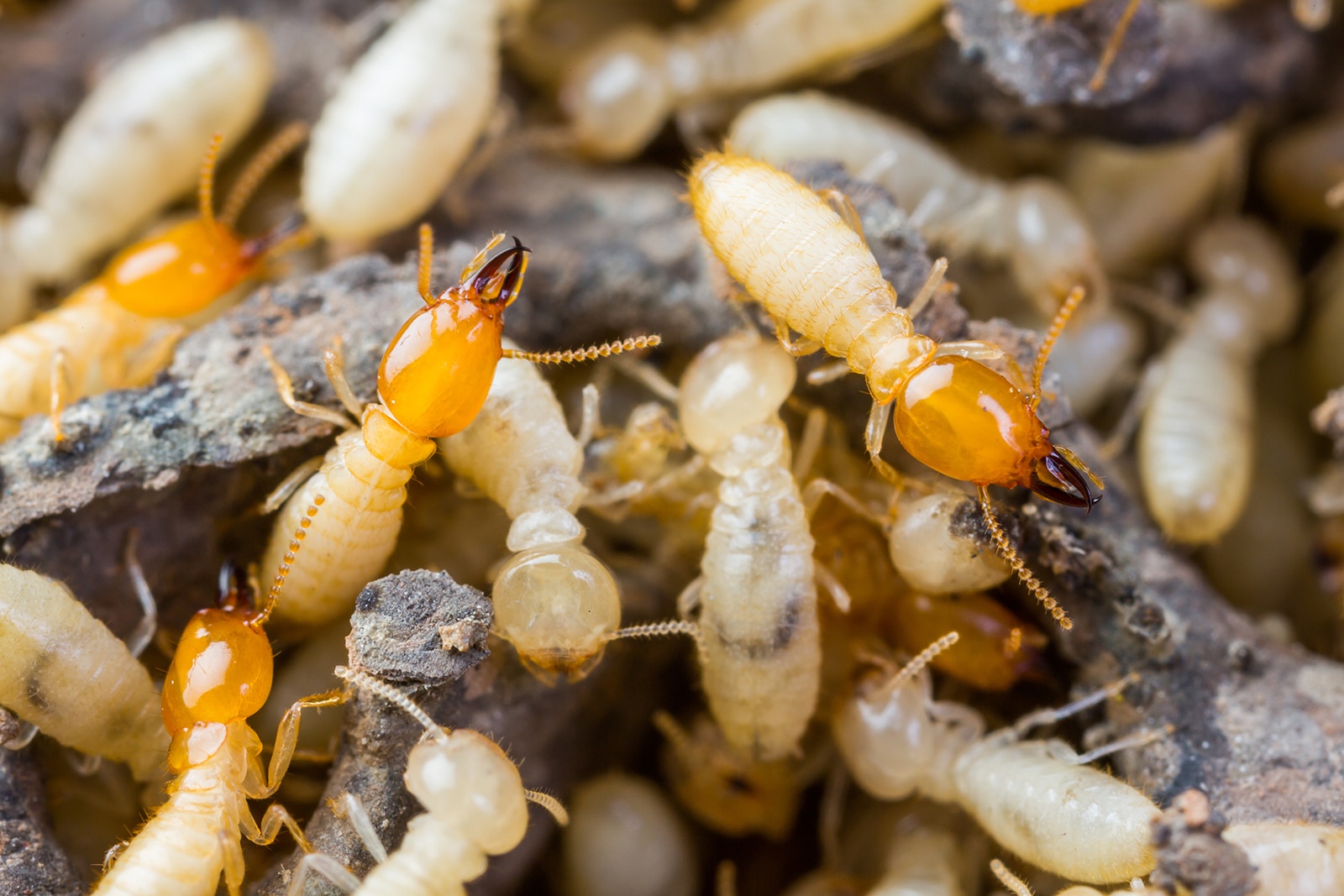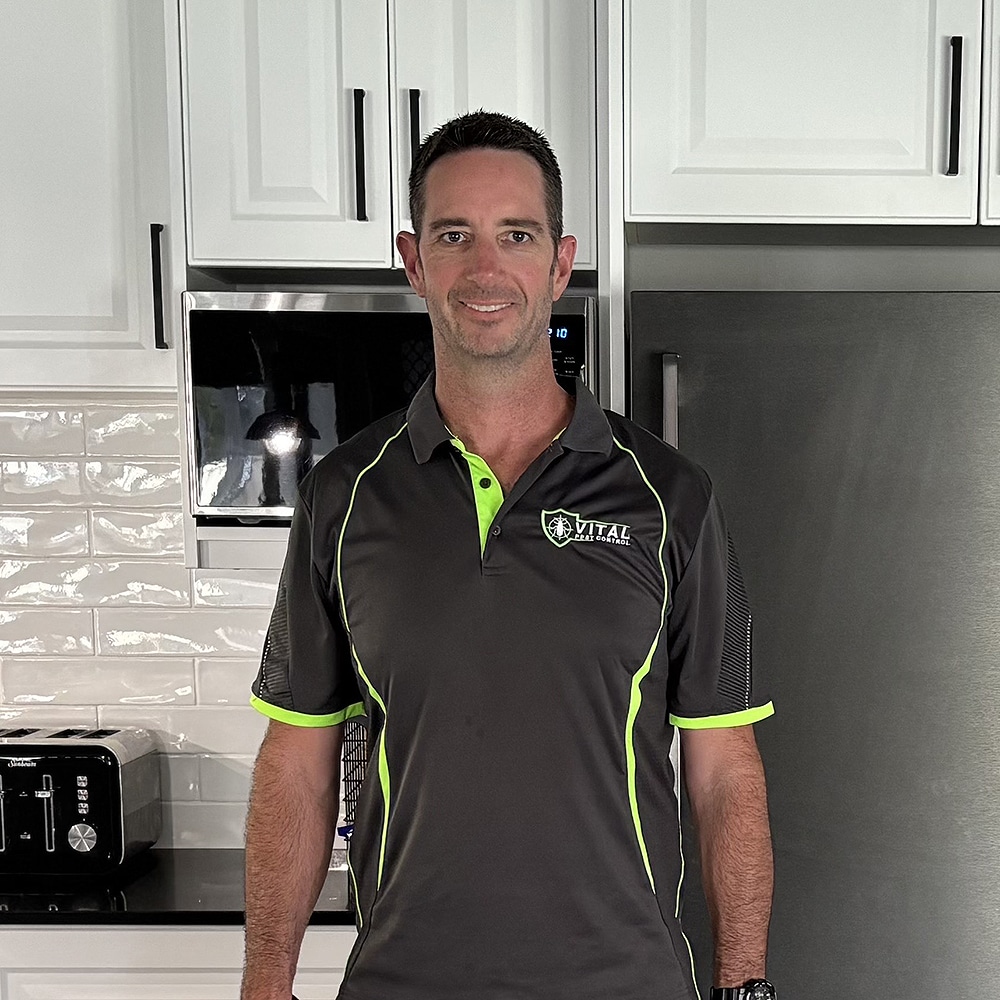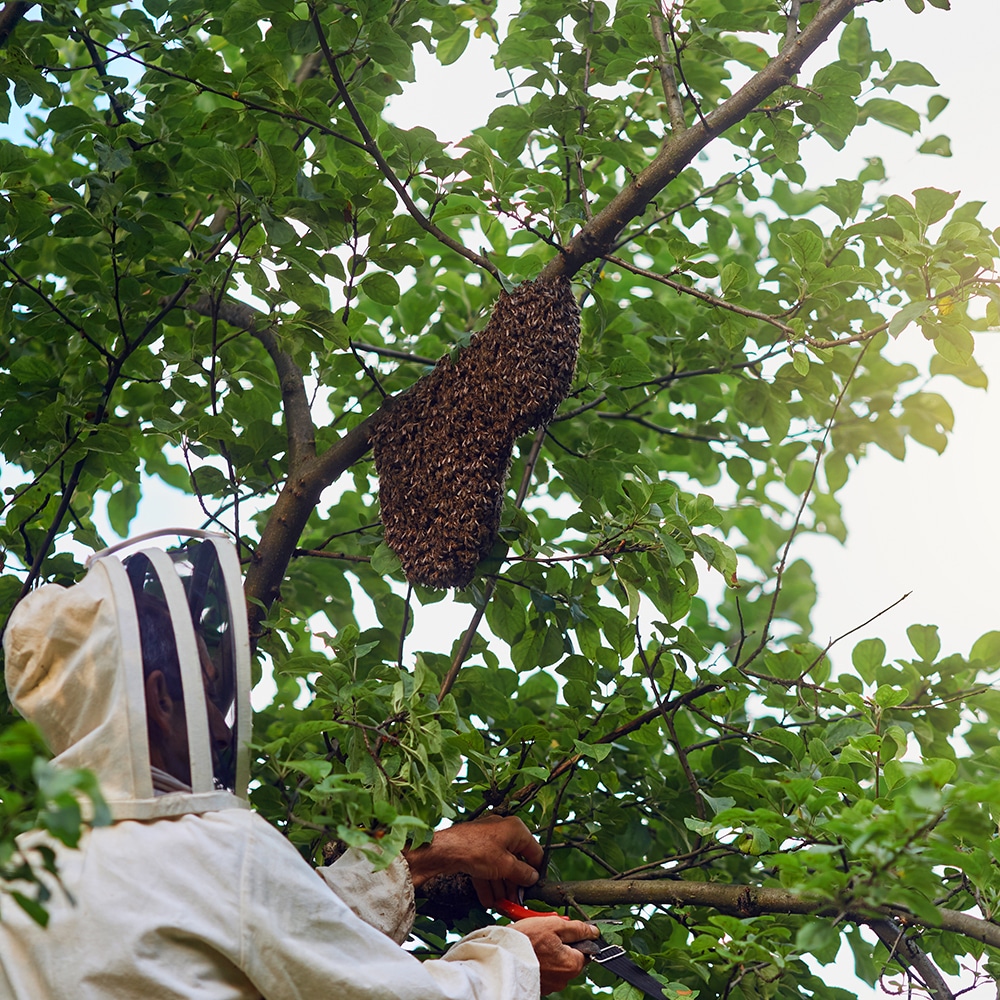
Why Do Spiders Come Back And Why
Why Do Spiders Come Back And Why On The Central Coast NSW. Responsive Proactive Solutions. Detail-focused for lasting results. Call Adam on 0431 222 894
Termite Swarmers and Seasonal Infestations can be a real headache for homeowners. These tiny pests often go unnoticed until they become a big problem. At Vital Pest Control, we specialise in keeping your home safe from these unwanted guests on the Central Coast NSW.
Identifying alates vs flying ants
Spotting the difference between alates and flying ants is crucial. Alates, or termite swarmers, have straight antennae and equal-sized wings. Flying ants, however, display bent antennae and wings of different lengths. Knowing these distinctions helps prevent infestations effectively.
Typical swarming months in humid climates
In humid climates like the Central Coast NSW, termite swarmers emerge mainly between November and February. They thrive in warm, moist conditions, making these months peak times for infestations. Being aware of this timing aids in proactive measures.
Why do termites swarm at night
Termite swarmers prefer the cover of darkness for their activities. Nighttime conditions offer cooler temperatures and higher humidity, ideal for their excursions. Understanding this behaviour can help in timing preventive actions more effectively.
Termite swarm prevention tips
Simple steps can prevent termite swarms. 1. Remove wood debris. 2. Fix leaks promptly. 3. Maintain a barrier between soil and wood structures. These steps ensure a termite-free environment. Stay vigilant for lasting results.
Avoiding porch lights that attract swarmers
Termite swarmers are attracted to lights. Use yellow or LED bulbs instead of bright white ones. This simple change reduces the likelihood of attracting swarmers to your home.
Protecting windows and doors from entry
Ensure all windows and doors are sealed tightly. Install mesh screens to block entry points. Regular checks and maintenance will keep swarmers out, providing peace of mind.
Checking for discarded wings indoors
Spotting discarded wings indoors indicates a potential infestation. Regularly inspect window sills and floors for these signs. Early detection allows for swift action, minimising damage.
Planning seasonal inspections proactively
Schedule regular inspections with professionals at Vital Pest Control. Proactive inspections detect issues before they escalate. Reliable and trustworthy services ensure your home remains protected year-round.
Discover how we can help you today! For detailed solutions, Contact us now.

Identifying alates and flying ants is crucial for effective pest control, especially on the Central Coast NSW. While both creatures have wings and can be mistaken for each other, understanding their differences helps in managing infestations efficiently.
Physical Characteristics
Alates have straight antennae, and their wings are equal in size. Their bodies are broad and uniform in width, making them distinct. In contrast, flying ants have elbowed antennae and two sets of wings, with the front pair larger. Their bodies are segmented with a noticeable waist, differentiating them from termites.
Behaviour Patterns
Alates usually swarm during warm, humid conditions, often after rain. Their primary purpose is to mate and establish new colonies. Flying ants, however, appear during warm months but are not solely focused on colony expansion. Their swarming is more about food sourcing and temporary mating flights.
Pest Control Implications
Recognising the difference between alates and flying ants is vital for effective pest control. Alates indicate a potential termite problem, requiring immediate attention to prevent structural damage. Conversely, flying ants, while annoying, usually pose less risk. Employing targeted pest control strategies based on accurate identification can save homeowners significant time and resources.
In humid climates like the Central Coast of NSW, termite swarming is a seasonal occurrence that demands attention from homeowners and businesses. Understanding when these swarms typically happen can help in planning effective pest control strategies. The region’s warm, moist conditions provide an ideal breeding ground for termites, making swarming a common event during certain months.
Springtime Awakening
Spring marks the beginning of termite swarming season on the Central Coast. As temperatures rise and humidity increases, winged termites, known as alates, begin to emerge in search of new nesting sites. This period is crucial for termite colonies as they seek to establish new territories. Observing swarms during this time often indicates active colonies nearby, necessitating prompt action from pest control services.
Summer Surge
Summer continues to be a high-risk period for termite swarms. The warm, wet weather conditions prevalent during these months create a conducive environment for termite activity. Swarms are most likely to occur after heavy rains when the ground is soft, providing easy access for termites to start new colonies. Regular inspections and preventative treatments during this time can help mitigate the risk of infestations.
Autumn Decline
As autumn approaches, termite swarming activity begins to decline. The cooler temperatures and reduced humidity levels make it less favourable for termites to swarm. However, vigilance is still necessary as established colonies remain active, continuing their destructive work unnoticed. Engaging a professional pest control service to assess and treat any termite activity can safeguard your property during this transitional season.
Termite swarming is a natural phenomenon that often puzzles homeowners on the Central Coast of NSW. These swarms usually occur at night, leaving many wondering why these insects choose the cover of darkness to emerge. Understanding the nocturnal habits of termites can help in managing and preventing infestations.
Temperature and Humidity
Termites swarm at night primarily due to the favourable temperature and humidity conditions. The cool night air and increased moisture create an ideal environment for termites. This ensures their delicate wings remain intact during flight. The humidity helps prevent dehydration, which is a significant risk during hotter daytime hours.
Protection from Predators
The cover of darkness offers termites some protection from predators. Birds and other daylight predators have limited visibility at night, allowing termites to emerge with less risk. This stealthy approach increases their chances of survival and successful colonisation elsewhere.
Light Attraction
Swarming termites are naturally attracted to light sources. This behaviour, known as positive phototaxis, drives them to swarm around artificial lights found on the exterior of homes. Homeowners may notice swarms near porch lights or street lamps, which can indicate the presence of a nearby colony.
Termite swarms are a common issue on the Central Coast of NSW. These pests can quickly invade homes, causing significant damage. Vital Pest Control offers essential tips to help prevent termite swarms, ensuring your property remains protected and pest-free.
Remove Wood and Debris
Keeping your property clear of wood and debris is crucial. Termites are attracted to wood piles, old stumps, and even mulch. Regularly inspect your yard and remove any unnecessary wood materials. This simple step can significantly reduce the risk of attracting a swarm to your property.
Seal Entry Points
Inspect your home’s exterior for potential entry points. Cracks in foundations, gaps in window frames, and roof voids can all provide access for termites. By sealing these gaps, you create a barrier that prevents swarming termites from entering your home. Regular maintenance of these areas is vital.
Ensure Proper Drainage
Moisture is a key factor in termite infestations. Ensure that your property has proper drainage systems in place, directing water away from your home’s foundation. Regularly clean gutters and downspouts to prevent water buildup. A dry environment is less appealing to termites, helping deter swarms.
As the warmth of the Central Coast evenings sets in, so do the challenges posed by termite swarmers. These pesky insects are naturally drawn to light, making your porch a prime target if it’s brightly illuminated. Understanding how to manage your outdoor lighting can be an effective step in termite prevention.
Choose Yellow Bulbs
Switching to yellow bulbs can significantly reduce the attraction of swarmers. Unlike standard white or bright lights, yellow bulbs emit wavelengths that are less enticing for insects. Installing these bulbs on your porch can create a less inviting environment for termites, helping to protect your home.
Opt for Motion Sensors
Using motion sensor lights instead of leaving your porch light on all night can deter swarmers. These sensors only activate when movement occurs, meaning your porch won’t be consistently lit. This strategy not only saves energy but also minimises the time your home is visible to insects.
Strategic Light Placement
Positioning lights away from entry points can make a big difference. If possible, place lights further from doors and windows to prevent swarmers from being drawn into your home. This simple adjustment helps maintain a barrier between your living space and these unwanted pests.
Protecting your windows and doors from entry is crucial when it comes to pest control on the Central Coast of NSW. Termites, particularly swarmers, can find their way into your home through even the smallest openings. Ensuring your windows and doors are secure not only helps keep these pesky intruders out but also maintains the integrity of your property.
Seal All Cracks and Gaps
Cracks and gaps around windows and doors are common entry points for termites and other pests. To prevent them from entering, use quality sealants to close any visible gaps. Regularly inspect your windows and doors to ensure these seals remain intact, especially after extreme weather conditions.
Install Screens and Barriers
Window screens and door barriers act as physical deterrents for pests. Choose fine mesh screens that can effectively block out smaller insects. Additionally, consider installing door sweeps to cover the gap between the door and the floor, further reducing entry points for termites.
Maintain Regular Inspections
Frequent inspections are vital in identifying potential vulnerabilities in your home’s defences. Engage professionals experienced in pest control on the Central Coast to examine your windows and doors regularly. These experts can spot early signs of termite activity and provide advice on reinforcing your property against infestations.
When living on the Central Coast of NSW, it’s crucial to keep an eye out for signs of termite activity. One often overlooked indicator is discarded wings. Termites, especially during swarming season, shed their wings after finding a new place to establish a colony. Spotting these can be a critical clue in identifying a potential infestation early.
Where to Look for Discarded Wings
Check around windowsills, doorways, and other light sources indoors. Termite swarmers are attracted to light, and they often drop their wings in these areas. Inspecting these spaces regularly can help catch a swarm before it becomes a bigger problem.
Understanding the Significance of Discarded Wings
Finding discarded wings indoors is a strong signal that termites may be attempting to establish a colony within your home. Unlike other insects, termites leave behind uniform-sized wings, which can be a helpful identifier. Recognising this can lead to early intervention and prevent extensive damage.
Steps to Take After Discovering Wings
If you discover discarded wings, contact a pest control professional immediately. Vital Pest Control on the Central Coast offers comprehensive termite inspections and solutions. Addressing the issue quickly can save you from costly repairs and further infestation.
Effective pest management on the Central Coast NSW requires careful planning, especially when dealing with termite swarmers and seasonal infestations. Being proactive with your inspections can save you from costly repairs and maintain a healthy environment in your home or business.
Understanding Seasonal Patterns
Recognising pest behaviour patterns is crucial. Many pests, including termites, follow seasonal cycles. During warmer months, termites swarm, searching for new places to establish colonies. Identifying these patterns allows property owners to schedule inspections at optimal times, reducing the risk of unchecked infestations that can cause significant damage.
Tailored Inspection Schedules
A customised inspection schedule tailored to local pest activity is vital. On the Central Coast, where the climate encourages diverse pest populations, scheduling inspections before peak activity seasons can be highly effective. This proactive approach ensures that early signs of infestation are caught and managed before escalating into larger problems.
Utilising Expert Knowledge
Leveraging local pest control experts enhances the effectiveness of your inspection plans. Professionals familiar with the specific pest challenges of the Central Coast can provide valuable insights. They can identify vulnerable areas in your property and suggest preventative measures, ensuring your pest control strategy is robust and effective year-round.
During the warmer months on the Central Coast, NSW, noting high humidity levels can be crucial for effective pest control. This is particularly true for termite swarmers, as increased humidity often triggers swarming behaviour. Understanding these patterns can help in managing infestations more effectively.
Understanding Swarming Triggers
Humidity plays a significant role in termite swarming. When the air becomes heavy with moisture, it’s the perfect cue for termites to leave their colonies. This is because moist conditions help them survive outside their nests. Keeping an eye on humidity levels can provide the vital pest control insights needed to anticipate these swarms.
The Impact in Local Infestations
Termites are more likely to infest a home during high humidity periods. Swarming termites look for new places to establish colonies, often ending up in buildings with existing moisture issues. Addressing these moisture problems can significantly reduce the risk of infestation, ensuring your property remains termite-free.
Effective Prevention Strategies
To combat termite swarms, maintaining a dry environment is key. Ensuring proper drainage and ventilation helps keep humidity levels in check. Regular inspections by pest control professionals can also identify potential problem areas before they develop into major issues, safeguarding your property from costly damage.
Collaborating with neighbours during termite swarm season on the Central Coast NSW can enhance pest control efforts and safeguard your property. By sharing information and resources, communities can tackle infestations more effectively, reducing the risk to individual homes.
Sharing Knowledge and Signs
Neighbours can be invaluable when identifying early signs of termite swarms. By exchanging observations, such as discarded wings or mud tubes, residents can alert each other to potential infestations. This collective vigilance helps pinpoint problems before they escalate, ensuring timely intervention.
Pooling Resources for Inspections
Scheduling group inspections with professional pest controllers can be cost-effective. By organising a neighbourhood check-up, residents can benefit from bulk pricing while ensuring thorough property assessments. This collective action not only saves money but also promotes a comprehensive approach to pest management.
Coordinating Treatment Plans
When termites are discovered, developing a unified treatment strategy with neighbours can enhance effectiveness. Coordinated efforts ensure that the entire area is treated simultaneously, preventing pests from simply relocating to untreated properties. This collaborative approach maximises the success of eradication efforts.
Building a Community Network
Establishing a communication network among neighbours encourages ongoing vigilance against termites. Regular updates and shared advice foster a proactive community stance against infestations, reducing the likelihood of recurrence. Engaging in neighbourhood initiatives strengthens bonds and safeguards homes collectively.
After a storm hits the Central Coast, your garden and patio might face significant damage, making them vulnerable to infestations, especially by termites. Protecting these outdoor areas is crucial to prevent potential pest issues that might arise after severe weather conditions.
Clear Debris Promptly
One of the first steps in safeguarding your garden is removing any storm debris. Fallen branches, leaves, and other organic materials create a breeding ground for insects. Clearing these quickly reduces the risk of termites and other pests settling in. This simple action can save you from future headaches and costly pest control measures.
Inspect and Repair Damages
After ensuring your garden is free from debris, inspect your patio and garden structures for any damage. Look for cracks in wooden elements or displaced soil, which could invite termites. Repairing these promptly maintains the integrity of your outdoor spaces and keeps termites at bay. Regular maintenance is key to preventing infestations.
Enhance Drainage Systems
Storms often disrupt the drainage patterns around your home. Poor drainage can lead to water pooling, attracting termites. Ensure your garden’s drainage system is efficient. Redirect water away from wooden structures to prevent damp environments that termites love. Simple adjustments can significantly reduce pest risks.
On the Central Coast NSW, homeowners face the challenge of termite swarmers and seasonal infestations. One effective way to combat these pests is by installing screen mesh on vents. This preventative measure helps block entry points, reducing the risk of termite and other pest invasions.
Choosing the Right Screen Mesh
Selecting the right screen mesh is crucial for effective pest control. Fine mesh with small openings works best to prevent termites and other small insects from entering. Stainless steel mesh is durable and resistant to weather damage, making it an excellent choice for long-term protection.
Installation Process
Installing screen mesh on vents requires careful measurement and cutting to fit each vent precisely. Begin by removing existing covers and cleaning the area. Attach the mesh securely using screws or clips, ensuring it covers the entire vent opening without gaps. This ensures pests cannot squeeze through.
Benefits of Screen Mesh Installation
Installing screen mesh on vents offers several benefits. It acts as a physical barrier against pests, reducing the likelihood of infestations. Additionally, it allows for natural airflow, maintaining ventilation while keeping unwanted guests out. This proactive approach can save homeowners significant costs associated with pest damage repairs.
Termite swarmers can be a significant concern for homeowners on the Central Coast, NSW. Educating your family about these pests is crucial for timely detection and effective pest control. Understanding the behaviour of swarmers can help prevent extensive damage to your property.
Recognising Swarmers
Swarmers are winged termites that venture out to form new colonies. Unlike worker termites, they can be mistaken for ants due to their size and wings. Teaching your family to identify these insects is the first step. Look for discarded wings near windowsills or doors, which indicate swarmers have entered your home.
Seasonal Activity Awareness
Swarmers are most active during warmer months, typically from spring to early summer. Family members should be more vigilant during this time. Encourage them to report sightings promptly. Early detection can prevent a full-blown infestation and save on costly repairs.
Proactive Measures
Inform your family about prevention strategies. Ensure they know the importance of reducing moisture around the house and sealing entry points. Regular inspections by professionals like Vital Pest Control can also help. By taking these steps, your family plays a vital role in keeping your home termite-free.
When dealing with termite swarmers and seasonal infestations on the Central Coast NSW, swift action is crucial. Understanding immediate containment strategies helps minimise damage and protect your property from these destructive pests.
Identifying Entry Points
Inspect your property to locate potential entry points used by termites. Look for cracks in the foundation, gaps around windows, and spaces in rooflines. Sealing these entryways with appropriate materials can prevent further access, reducing the chances of infestation. This immediate action creates a barrier against termite invasion.
Utilising Bait Stations
Bait stations are effective in controlling termite populations quickly. Place them strategically around your property to lure termites away from structures. These stations contain substances that termites ingest and share, effectively eliminating the colony over time. Bait stations offer a proactive approach to managing infestations.
Deploying Chemical Treatments
Professional pest controllers may recommend chemical treatments as an immediate containment strategy. These treatments create a protective zone around your property, repelling termites and preventing further spread. Professional application ensures safety and effectiveness, providing peace of mind.
Maintaining Vigilant Monitoring
Ongoing monitoring is essential to ensure termites do not return. Regular inspections by pest control experts can detect early signs of new infestations, enabling prompt intervention. Consistent vigilance helps maintain a termite-free environment, safeguarding your investment.
As the termite swarm season concludes on the Central Coast of NSW, it becomes crucial to follow up and ensure that any potential infestations are managed effectively. Vital Pest Control is committed to helping homeowners maintain termite-free properties by offering professional inspections and treatments tailored to your specific needs.
Importance of Post-Swarm Inspections
After the swarm season, termites may have settled into your property without your knowledge. A comprehensive inspection by Vital Pest Control can identify any signs of termite activity early on. Our experts meticulously examine common entry points, ensuring that no area is left unchecked. Early detection is key to preventing extensive damage and costly repairs.
Effective Treatment Plans
Once an inspection is complete, it is vital to implement effective treatment strategies. Our team provides tailored solutions that address the specific termite issues found on your property. Whether it involves baiting systems or chemical barriers, we ensure that the treatment plan is both effective and environmentally friendly, safeguarding your home from future infestations.
Regular Monitoring and Maintenance
Termite protection does not stop after initial treatment. Regular monitoring and maintenance are essential to prevent re-infestation. Vital Pest Control offers ongoing support to homeowners, scheduling follow-up visits to reassess and reinforce termite barriers. This proactive approach keeps your home protected long after the swarm season ends.
Please leave your details in the form and we will call you back the same day.
So that we can process your enquire efficiently please leave as many details as possible and upload any relevant images. (.jpg and .png format)

Why Do Spiders Come Back And Why On The Central Coast NSW. Responsive Proactive Solutions. Detail-focused for lasting results. Call Adam on 0431 222 894

Building a Long Term Residential Pest Protection Plan For Home Owners On The Central Coast NSW. Responsive Proactive Solutions. Detail-focused for lasting results. Call Adam on 0431 222 894

How to Protect Your Home from Wasp Infestations On The Central Coast NSW. Responsive Proactive Solutions. Detail-focused for lasting results. Call Adam on 0431 222 894